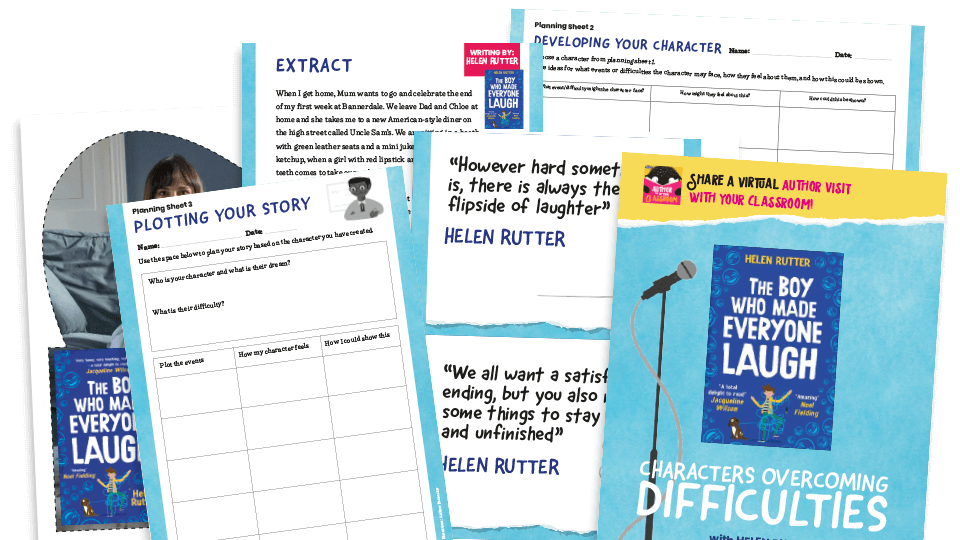Stammering in children – Teaching advice from the experts

Learn what you can do to stop a pupil’s stammer from getting in the way of their learning and development…

- by Teachwire
- Classroom expertise and free resources for teachers

Stammering affects 1% of adults and up to 9% of children. With numbers like this, it’s very likely you will encounter stammering in children throughout your teaching career.
If you have a stammer, waiting for your turn to speak in a lesson or having to introduce yourself in an ice breaker activity can be terrifying. Unfortunately, many young people and adults with stammers also experience bullying.
In this article we’ll lay out what stammering is, what to look out for and, most importantly, what we can do as teachers to help any pupils who stammer…
What is stammering?
Stammering is a neurological condition that makes it physically hard to speak. A person who stammers will most likely prolong sounds or words.
They may also repeat or get stuck on words. For some, you will see facial tension while trying to speak.
Stammer vs stutter
The term “stammering” is commonly used in the UK, while other countries use the word “stutter”.
What causes stammering in children?
Stammering affects mainly males and we do not know why this is the case. Stammering is not linked to intelligence.
Just like many other conditions, stammering covers a wide spectrum which means everyone’s stammer is different.
Podcast and teaching resources
The Boy Who Made Everyone Laugh by Helen Rutter is a previous winner of the KS2 category of the Teach Primary Book Awards.
It follows Billy Plimpton, a boy with a stammer who dreams of being a stand-up comedian but must overcome multiple obstacles, including a school bully.
Listen to the author talk about the book in episode 17 of the Author in your Classroom podcast, then download free accompanying resources to help students write their own story based on a character who is finding their way in the world.
What are the symptoms of stammering in children?
Overt behaviours
There are a range of overt behaviours you might notice when a young person stammers. These include:
- putting hands over or around mouth
- repeating words or sounds
- seeming tense and anxious
- speaking in a funny voice, such as a baby voice
- speaking more quietly or loudly than necessary
- interrupting or calling out in class, which can seem rude
- using filler words such as ‘like’, ‘and’, ‘y’know’ and ‘sort of’ to act as a run-in to speaking
Covert behaviours
There are also a range of covert behaviours you might notice when a young person stammers. These include:
- avoiding talking
- trying to get out of situations where talking is expected
Pupils may behave in ways that cover up their stammer. For example, they may seem quiet and hardworking, or they might be difficult in class and try to dominate other children.
Having a stammer may cause students to compromise on what they’d like to do or say. They may see situations as an exposure of their stammering and might judge opportunities solely in terms of it.
“Pupils may behave in ways that cover up their stammer”
For example, they may avoid school trips or visits to friends’ houses. You may see pupils planning ahead in their talking, continually worrying about their choice of words, or talking so quietly that you can’t hear what they’re saying.
Children with stammers often worry about friendships and simple social demands such as buying sweets, paying bus fares or calling someone. They may feel generally worried about what is coming next.
How to help children who stammer

Here are some easy tips to help young people with stammers feel at ease in your class and access the most from education.
People who stammer may struggle to ask for help. It’s good practice to regularly check on them to see if they need anything. However, try not to make it obvious that you are treating them differently. No one likes to be treated differently, especially in front of others.
Have honest and open conversations with a child who stammers. Ask for guidance and let them know that you are up for learning and doing things differently.
If in doubt, speak to the SEN department in your school, or to your local speech and language therapy team.
Time to finish
It’s vital to allow children who stammer the time to finish, no matter how uncomfortable it may be for you. Do not tell people who stammer to ‘take their time’ or to ‘breathe slowly’.
“Ask for guidance and let them know that you are up for learning and doing things differently”
If there are behaviour issues to deal with in the class while a pupil is stammering, stop the speaker gently and say you will return in a moment.
Sometimes it may seem you are being helpful when finishing the sentences of a child who stammers. It is not helpful. In fact, it is rude. Let them say what they have to say.
Measuring success by responding quickly is very common. If someone doesn’t respond quickly, we assume that they don’t know the answer.
Many people who stammer will deliberately say things like “erm” as a tic to help them to speak fluently. Please do not assume that they don’t know the answer.
Trending
Asking a question like “Would you like me to come back to you later?” is a great reasonable adjustment you can make.
Time to plan
Most children appreciate being given notice of oral tasks, so that planning can take place. This is particularly beneficial for children who stammer, as it gives them time to plan ahead.
Anxiety can be reduced by explaining to a pupil when an answer will need to be given or a passage read aloud.
Some children who stammer prefer to go first to avoid the build-up of stress, while others may simply just want to know when it will be their turn.
Always encourage children with stammers to take part in speaking activities – but check beforehand, so you know what they’re comfortable with.
“Some children who stammer prefer to go first to avoid the build-up of stress”
Cold calling is a great technique in teaching. Find out from your student who stammers if they are OK with it. If they are, then perfect!
If you find they are struggling to speak when being cold-called, be patient and let them say what they have to say.
If you feel they’re genuinely struggling because they don’t know the answer, then say things like “I’ll come back to you in 30 seconds’ time, have a think”
Tracking achievement
Children who stammer have the same range of abilities and personality traits as children who don’t. It’s easy to underestimate the ability of a child who stammers, as they may not always be able to express their thoughts and ideas.
Track achievement in relationship to the potential of the child in question, using whatever cognitive tests are favoured in your school.
Remember – just because a child doesn’t appear able to talk, it doesn’t mean they don’t understand.
Taking the register
Find out how the student in question would like to respond when you’re doing the register. Phrases like “yes sir/miss” can be difficult. You may find that they would prefer to use another phrase like “present” or “here”.
“Find out how the student in question would like to respond when you’re doing the register”
Using mini whiteboards
If a student is not comfortable with cold calling, consider using mini whiteboards when teaching in class. These ensure that everyone has the chance to contribute, and not just those who are confident.
Be mindful of fatigue
When a person who stammers is tired, they’re likely to stammer more. If you’re teaching a child near the end of the day, be mindful that they may not wish to take part at all with questions or activities that require verbal answers – and that is OK.
Presentations and group work
For individual/group presentations, do not penalise students for not keeping to the time limit. Allow 25 per cent extra time for those who stammer – this is encouraged by OFQUAL. Do not make it compulsory to introduce yourself with your name.
Having your name on the first slide is good enough, or if it’s a group presentation, get the first speaker to introduce everyone.
If working in groups, ensure roles are defined and that everyone has an equal part to play. No one should be talking considerably more than another student.
Prepare other pupils
Explain to other pupils what a stammer is. Ask the child with a stammer if they want to talk to the class about it, or show a video about the topic and do some work in class.
If pupils have an understanding of what a stammer is they may be more likely to ignore it than use it as fuel to bully.
“If pupils have an understanding of what a stammer is they may be more likely to ignore it”
Praise them
Show children who stammer how proud you are when they perform. Don’t say, “You didn’t stammer that much” or “I barely noticed your stammer”. Instead, tell them they’re a great actor or made you laugh.
Our experts
Thank you to Adam Black, Abed Ahmed and Helen Rutter for the above advice. Adam Black is a secondary teacher, based at an autism service unit within a mainstream school. Follow him at @adam_black23.
Abed Ahmed is a maths teacher and lead practitioner at Washwood Heath Academy in Birmingham. He runs free student support groups for stammerers via Zoom. Follow Abed on Twitter at @stammer_teacher.
Helen Rutter is the author of The Boy Who Made Everyone Laugh. Find her on Twitter at @helenrutteruk and visit her website at helenrutter.com.







